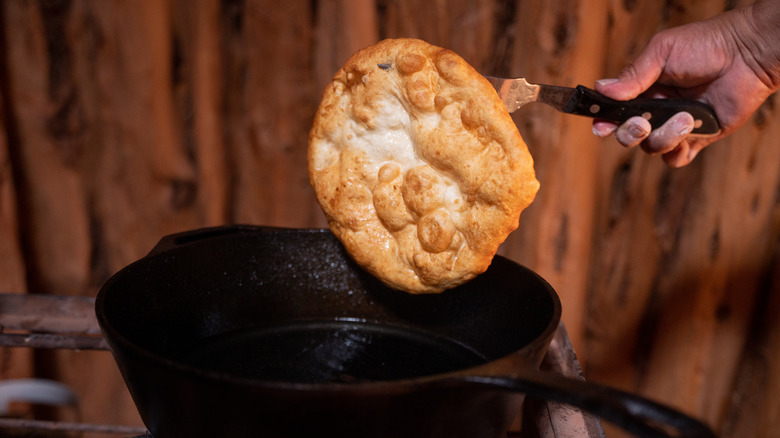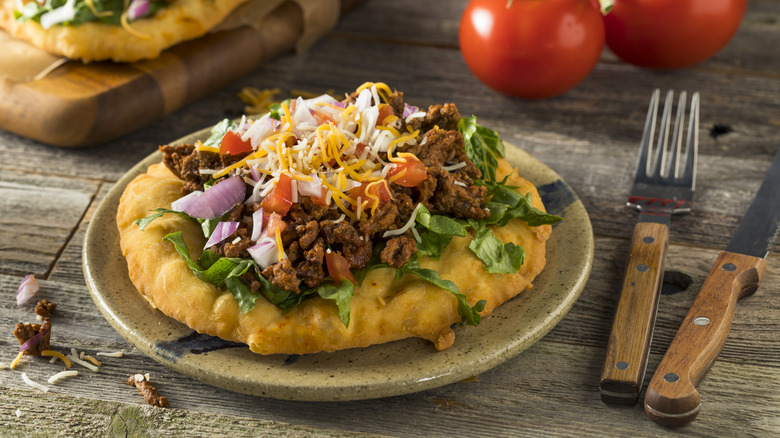How Fry Bread Became A Navajo Staple
The difficulty of some foods is that they can be both loved and a symbol of a tragic past, and few things encapsulate that dichotomy more than Native American fry bread. Like many old traditions, fry bread recipes vary by family and region, but the basic elements are flour, salt, baking powder, and oil. The bread is formed into a round, flat dough and fried in the oil, where it puffs and browns until getting a crispy exterior while staying fluffy and tender on the inside. Fry bread can be used a variety of ways, from simply being drizzled with honey for an easy dessert, to topped with spicy pinto beans for a Navajo taco. But despite widespread consumption across Native communities in the United States, it's a complicated topic, partially because of its health effect, but mainly because of its origins in the persecution of Native Americans, and the Navajo in particular.
Prior to the arrival of European settlers, the Navajo people, who call themselves the Diné, lived in a large area around the modern-day four corners region, centered on Northeast Arizona. There, they grew traditional Navajo and Native crops like corn, beans, and squash, which formed the core of their diet. But after the Mexican-American war, the U.S. implemented the same policies of removal that they had in the East, and many Navajo were forced off of their ancestral land in a brutal event called the Long Walk. And this is where fry bread was born.
Fry bread was born from scarce rations after the Navajo people were forced off of their native land
The Long Walk moved the Navajo up to 450 miles from their home to a number of internment camps in Eastern New Mexico, including the Bosque Redondo Reservation. The Navajo were abused and killed as they marched and were reduced to starvation. Even once they arrived at the camp, hundreds died of hunger. To help feed them, and to culturally assimilate them into western ways, the U.S. government provided rations to the Navajo, including flour, salt, sugar, and lard. It was on that reservation, lacking the traditional vegetables and game that made up their diet, that the Navajo people created fry bread. That same system of rationing with western ingredients eventually became the norm in reservations across the country, and the use of fry bread spread to many other Native groups.
Today it's at the center of a debate about history and Navajo and Native American food. Fry bread is a comfort food that brings up fond memories for many and can also seen as a symbol of resilience, creating something delicious in the face of persecution. For others, it is a poverty food imposed on the Navajo by outside conquerors, foreign to their diet, and a processed food partly responsible for a diabetes epidemic among Native Americans. Whether it's embraced or shunned in the future, it will always remain as living history of a past many people would rather forget.

